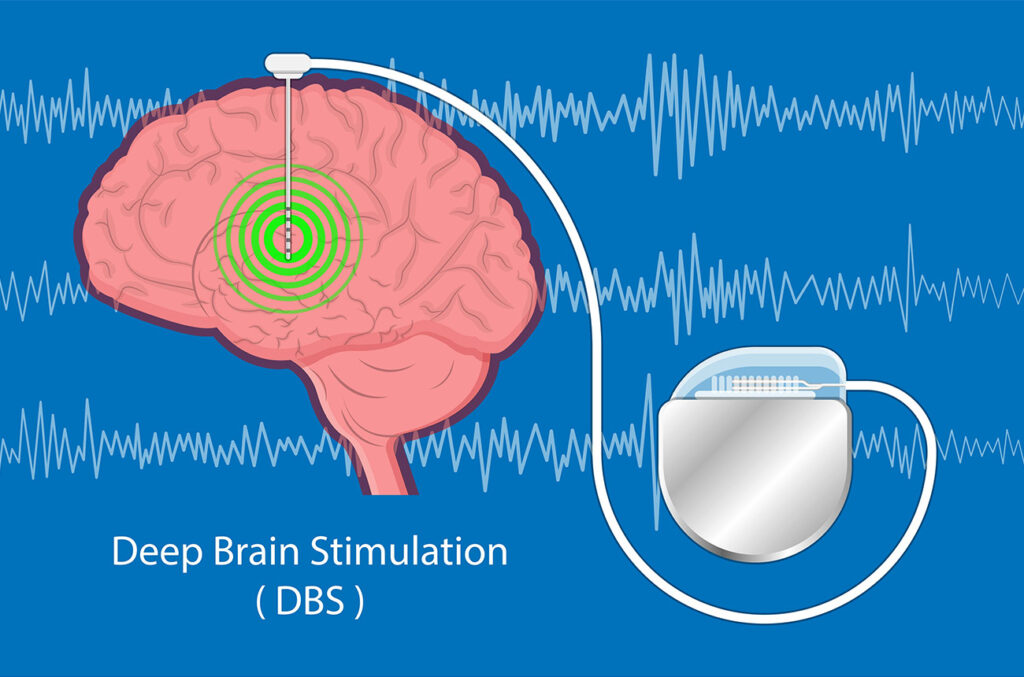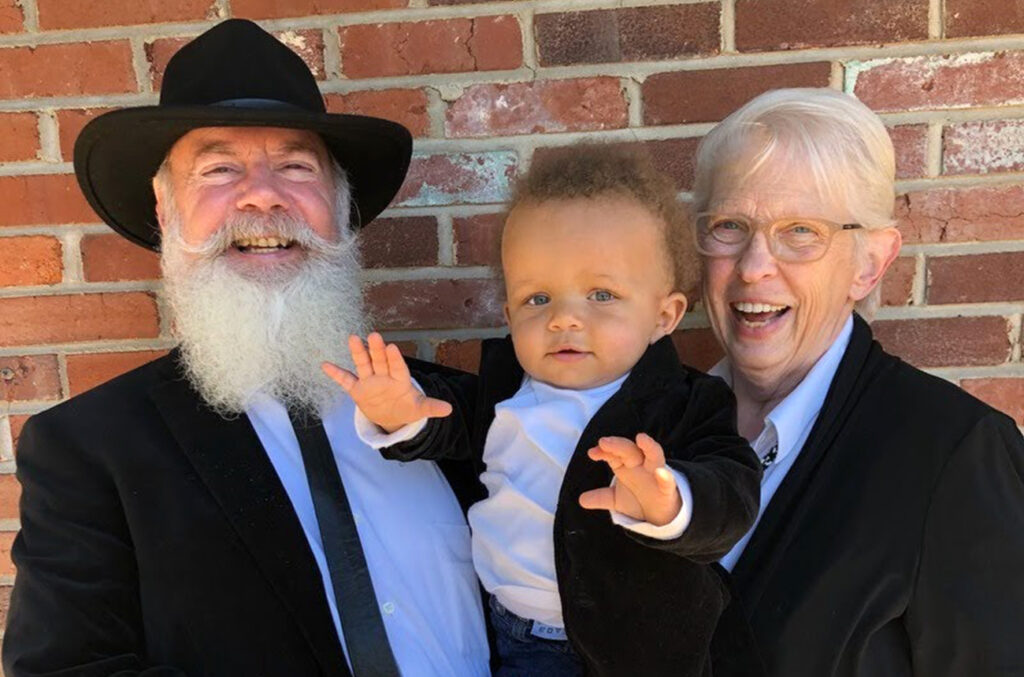“I started shaking in 5th grade,” says Jo Ann Trefts, who suffered from tremors for decades until being treated with deep brain stimulation (DBS). Her husband Bill Trefts also developed essential tremor at a young age. In his case, the shaking developed as a college student. He was majoring in music and playing the organ.
Essential tremor is a common disorder, often inherited, which results in involuntary, rhythmic muscle contraction leading to shaking movements in one or more parts of the body. It impairs activities of daily living such as feeding oneself, writing, typing, and dressing.
The Trefts were in their sixties by the time they learned about deep brain stimulation. They both went through life with tremors, adapting to annoying and potentially demoralizing or dangerous situations. Bill recalls a time his hand started shaking as he was serving coffee to a guest. He narrowly avoided spilling the coffee and scorching the guest.
Jo Ann fondly remembers how her granddaughter would offer to cut her food for her. “I usually tried not to accept help, but she was so sweet to me.”
Jon T. Willie, MD, PhD, treats essential tremor with innovative deep brain stimulation, a safe and effective way to silence the overly active subnucleus of the thalamus that causes the tremor.
“Most patients who undergo DBS are very satisfied and wish they had undergone surgery much earlier,” says Dr. Willie, a neurosurgeon at Washington University School of Medicine in St. Louis.
Deep brain stimulation involves implanting a narrow electrode (smaller than a pencil lead) into the desired brain target and connecting it to a pacemaker device under the skin. Once programmed by a neurologist, DBS focally disrupts abnormal brain activity and instantly stops tremor symptoms to improve motor function.
Bill recalls his experience as Washington University neurologist Mwiza Ushe, MD, programmed his device: “I was awake so that I could respond to Dr. Ushe’s tests. And as I was sitting there, all of a sudden, my hand stopped shaking. It was amazing.”

“The neurosurgical methods and devices we use to treat movement disorders are innovating constantly,” says Willie. “The newest devices allow greater control over stimulation parameters as well as the ability to sense brain signals to guide personalized therapy. The newest stimulator devices are rechargeable to minimize device replacement over time.”
A typical surgery takes about four hours. Patients usually spend one night in the hospital and resume normal activities over the course of several days.
The Trefts often reach out to others who struggle with tremors to share their knowledge of DBS.
“It’s a miracle,” says Jo Ann. “We want people to know that DBS can change their lives.”

